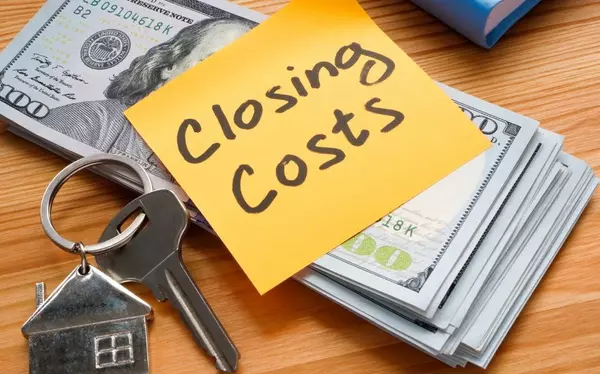What are the types of insurance for homes?

What are the types of insurance for homes?
Your home is more than just bricks and mortar; it's a haven, a place to build memories, and a significant financial investment. Protecting this investment is crucial, and that's where home insurance comes in.
Home insurance is a financial safety net that safeguards your property from unforeseen events. It serves as an agreement between you and the insurance provider. You pay a premium (monthly or annual cost) in exchange for financial protection if your home or its contents are damaged or lost due to covered events.
Having home insurance offers invaluable peace of mind. Imagine a fire devastates your home, or a powerful storm rips through your roof. The financial burden of repairs and replacements could be crippling. Home insurance steps in during these times, covering these costs and preventing a financial catastrophe.
So, what exactly does home insurance typically cover? Here's a general overview:
- Dwelling coverage: Protects the physical structure of your home, including walls, roof, foundation, and attached structures like garages.
- Coverage for personal property includes items like clothing, appliances, electronics, furniture, and other items kept inside your house.
Liability insurance shields you from monetary obligations in the event that someone is hurt on your land. - Liability coverage: Protects you from financial responsibility if someone gets injured on your property.
- Additional living expenses (ALE): Covers temporary housing costs if your home becomes uninhabitable due to a covered event.
Now that we understand the fundamentals of home insurance, the next step is exploring the different types available. Each policy is designed to cater to specific needs and property types, ensuring you get the right coverage for your situation.
Types of Home Insurance
Home insurance is not a one-size-fits-all solution. To cater to the diverse needs of homeowners, insurance companies offer various types of policies, each with its own set of coverage options and considerations. Let's delve into the intricacies of these different types of home insurance:
A. HO-1 Basic Form
The HO-1 Basic Form is the most straightforward type of home insurance policy. It provides coverage for specific perils explicitly listed in the policy, such as fire, theft, vandalism, and certain natural disasters. While it offers basic protection against common risks, it may not cover more extensive or unforeseen damages.
B. HO-2 Broad Form
The HO-2 Broad Form offers more comprehensive coverage compared to the HO-1 Basic Form. In addition to the perils covered under HO-1, it includes protection against a broader range of risks, such as falling objects, water damage from plumbing issues, and electrical surges. This type of policy provides greater peace of mind by offering protection against a wider array of potential threats to your home.
C. HO-3 Special Form
The HO-3 Special Form is the most commonly chosen type of home insurance policy among homeowners. It provides coverage for the structure of the home against all perils except those explicitly excluded in the policy. This broad coverage extends to most types of damages, making it a comprehensive and versatile option for homeowners seeking robust protection for their property.
D. HO-4 Renter’s Insurance
HO-4 Renter’s Insurance is specifically designed for tenants renting a property. While landlords typically have insurance coverage for the building itself, renters are responsible for protecting their personal belongings and liability. This type of policy offers coverage for personal belongings, liability protection, and additional living expenses in the event that the rental property becomes uninhabitable due to a covered peril.
E. HO-5 Comprehensive Form
The HO-5 Comprehensive Form is the gold standard of home insurance policies, offering extensive coverage for both the structure of the home and personal belongings. It provides broader protection than the HO-3 Special Form, making it suitable for high-value homes or homeowners with valuable possessions that require extra security.
F. HO-6 Condo Insurance
Condo owners have unique insurance needs, as they typically only own the interior structure of their unit. HO-6 Condo Insurance provides coverage for the interior of the condo, personal belongings, and liability protection. It complements the master insurance policy held by the condo association, filling coverage gaps and ensuring comprehensive protection for condo owners.
G. HO-7 Mobile Home Insurance
Mobile homes require specialized insurance coverage tailored to their unique characteristics and risks. HO-7 Mobile Home Insurance provides protection for mobile homes against specific perils, such as transportation and installation damage, as well as liability coverage for accidents that occur on the property.
H. HO-8 Older Home Insurance
Historic or older homes often require specialized insurance coverage due to their unique construction and materials. HO-8 Older Home Insurance takes into account the specific needs of older homes, providing coverage tailored to their requirements. It may include provisions for repair or replacement using original materials and methods, ensuring that historic homes are adequately protected.
Factors to Consider When Choosing Home Insurance
Choosing the right home insurance policy involves careful consideration of various factors to ensure adequate protection for your property and belongings.
Here are some important things to remember.
Location-specific considerations
The location of your home plays a significant role in determining the risks it faces. Factors such as proximity to coastlines, flood zones, seismic activity, and crime rates can impact your insurance needs. For example, homes located in areas prone to natural disasters may require additional coverage for flood or earthquake insurance.
Home value and replacement cost
It's essential to accurately assess the value of your home and its contents to determine the appropriate coverage limits. Consider the cost of rebuilding your home and replacing your belongings in the event of a total loss. Keep in mind that the market value of your home may differ from its replacement cost, so it's crucial to consult with an insurance agent to ensure adequate coverage.
Deductibles and premiums
The amount you have to pay out-of-pocket before your insurance coverage begins is known as your deductible. Your premiums may go down if you choose a higher deductible, but you might have to pay more in the event of a claim. Conversely, opting for a lower deductible can lead to higher premiums but may provide greater financial protection. Evaluate your budget and risk tolerance to determine the deductible that best suits your needs.
Additional coverage options
In addition to standard coverage for your home and belongings, consider whether you need additional coverage options to address specific risks or liabilities. This may include coverage for valuable items such as jewelry, artwork, or electronics, as well as liability protection for accidents that occur on your property. Review your policy options carefully to ensure you have adequate coverage for your unique needs.
Tips for Finding the Right Home Insurance
Finding the right home insurance policy can seem like a daunting task, but with the following tips, you can navigate the process with confidence:
Researching insurance providers
Investigate respectable local insurance companies first. Seek out businesses with a solid credit standing and stellar testimonials from clients. Consider factors such as customer service, claims handling process, and overall satisfaction when evaluating insurance providers.
Comparing quotes
Once you've narrowed down your list of potential insurance providers, request quotes from multiple companies to compare coverage options and premiums. Be sure to provide accurate information about your home and belongings to ensure you receive accurate quotes. Keep in mind that the cheapest option may not always provide the best coverage, so weigh the cost against the level of protection offered.
Understanding policy details
Before purchasing a home insurance policy, take the time to review the policy details carefully. Pay attention to coverage limits, exclusions, deductibles, and any additional endorsements or riders included in the policy. Please don't hesitate to ask your insurance agent for clarification if you have any questions or concerns.
Seeking professional advice if necessary
If you're unsure about which home insurance policy is right for you, consider seeking advice from a licensed insurance agent or broker. An experienced professional can assess your specific needs and recommend appropriate coverage options tailored to your circumstances. They can also help you navigate the complexities of insurance terminology and policy details to ensure you make an informed decision.
By considering these factors and following these tips, you can find the right home insurance policy to protect your home and belongings against unexpected disasters and liabilities. Remember that home insurance is an essential investment in your financial security, providing you with peace of mind knowing that you're prepared for whatever life may throw your way.
Frequently Asked Questions (FAQs)
Home insurance can be complex, and homeowners often have questions about coverage options and policy details. Here are some frequently asked questions and clarifications:
Common queries about home insurance types:
- What is the difference between HO-3 and HO-5 home insurance policies?
- Do I need additional coverage for natural disasters like floods or earthquakes?
- Can I change my deductible and coverage amounts later on?
- Are there discounts available for bundling home and auto insurance policies?
Clarifications on coverage and policy details:
- What is covered under personal property protection?
- Does my home insurance policy cover temporary accommodation if my home becomes uninhabitable?
- What liability coverage limits are recommended to protect against lawsuits?
- Are there any exclusions or limitations I should be aware of in my policy?
VII. Conclusion
Home insurance is a critical investment in protecting your home and belongings from unexpected disasters and liabilities. It provides financial security and peace of mind, ensuring that you're prepared for whatever life may throw your way.
In this comprehensive guide, we've explored the importance of home insurance and the various types available to homeowners. From basic coverage options to comprehensive policies, there's a home insurance solution to suit every need and budget.
Encouragement for homeowners to assess their needs and find suitable coverage:
As a homeowner, it's essential to assess your insurance needs carefully and find the most suitable coverage for your circumstances. Take the time to evaluate your home's value, risks, and personal belongings to ensure you have adequate protection. Consult with insurance providers and seek professional advice if necessary to make informed decisions about your coverage options.
Categories
Recent Posts










